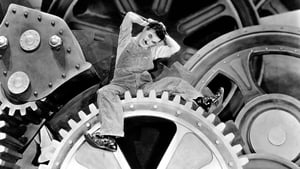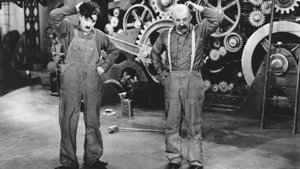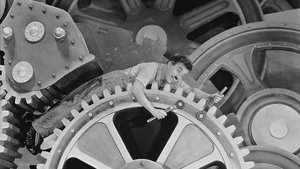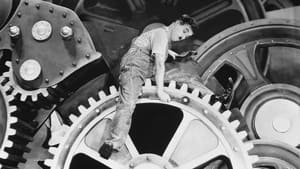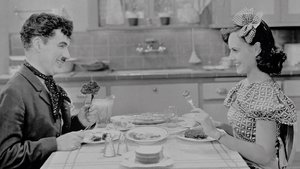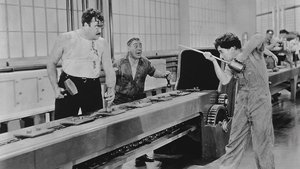Factory Work, Freedom & Laughter: Modern Times (1936) in Full Color
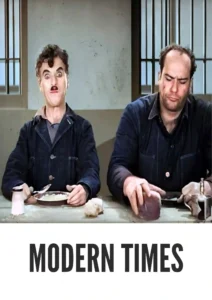
Step into the machine age with Modern Times, Charlie Chaplin’s iconic 1936 masterpiece, now beautifully colorized for a viewing experience like never before. Often considered a silent film though it uses sound, Modern Times delivers a blend of comedy and social commentary. Perfect for film enthusiasts and those seeking a taste of Chaplin’s genius, this HD download brings a timeless piece of cinematic history to your screen. Other known titles include The Masses, and The Modern Times.
Modern Times Storyline: A Little Tramp’s Struggles
Modern Times follows the Little Tramp (Charlie Chaplin) as he struggles to survive in the modern, industrialized world. He endures grueling work on an assembly line, faces the dehumanizing effects of technology, and is eventually driven to the brink of madness.Along the way, the Tramp meets a young orphaned girl, Ellen Peterson (Paulette Goddard), and together they strive to find happiness and freedom in a world that seems determined to crush their spirits. They face various challenges, including unemployment, poverty, and run-ins with the law, but their resilience and optimism shine through. The film culminates in a hopeful yet uncertain ending, as the Tramp and the girl walk off into the sunset, ready to face whatever the future holds. Ultimately, Modern Times is a poignant and humorous commentary on the human condition, offering a timeless message of hope and perseverance.
Movie Cast
The film features a talented cast of actors who bring this story to life:
- Charlie Chaplin as The Tramp
- Paulette Goddard as Ellen Peterson
- Henry Bergman as Café Owner
- Tiny Sandford as Big Bill
- Chester Conklin as Mechanic
Movie Genre
Modern Times falls into the genre of social satire, with elements of comedy, romance, and drama. Its blend of slapstick humor and social commentary makes it a thought-provoking and entertaining film.
Historical Context: Chaplin’s Commentary on the Machine Age
Released in 1936, Modern Times reflects Charlie Chaplin’s concerns about the impact of industrialization and mass production on the human spirit. The film was produced during the Great Depression, a time of widespread unemployment and economic hardship. Modern Times offers a critique of the dehumanizing aspects of modern life while celebrating the resilience and ingenuity of ordinary people.
Colorization Details
This colorized version of Modern Times has been meticulously restored using modern digital techniques, enhancing the visual appeal while preserving the film’s original charm. The colorization process involved carefully analyzing the grayscale tones of the original black and white footage and assigning appropriate colors to each scene. While the specific software used remains proprietary, the techniques employed included advanced algorithms for color palette selection and image enhancement. This painstaking process brings new life to the characters and settings, making the story even more engaging for modern audiences.
Technical Details
- Director: Charlie Chaplin
- Screenplay: Charlie Chaplin
- Cinematography: Roland Totheroh, Ira H. Morgan
- Edited by: Charlie Chaplin
- Production Company: Charles Chaplin Productions
- Distributed by: United Artists
- Runtime: 87 minutes
Technical Specifications
- Download Format: MP4
- Resolution: HD (1080p)
- Compatibility: Compatible with most devices, including smartphones, tablets, computers, and smart TVs.
Reviews and Critical Reception
Modern Times is widely regarded as one of Charlie Chaplin’s greatest films and a landmark achievement in cinematic history. Its blend of comedy, social commentary, and visual storytelling continues to resonate with audiences around the world. The film has been praised for its timeless themes, its memorable characters, and its innovative use of sound and imagery.
FAQs
- Q: What is Modern Times about?
- A: Modern Times is a social satire about a tramp who struggles to survive in the modern, industrialized world.
- Q: Is Modern Times a silent film?
- A: While largely silent, Modern Times incorporates sound effects and musical score.
- Q: Is this version of Modern Times colorized?
- A: Yes, this version has been professionally colorized to enhance the viewing experience.
- Q: What makes Modern Times a classic?
- A: Modern Times offers a timeless commentary on the human condition, blending comedy and social criticism in a unique and memorable way.
- Q: What is the download format?
- A: The download format is MP4, which is compatible with most devices.
- Q: What resolution is the download?
- A: The resolution is HD (1080p), providing a high-quality viewing experience.
Download Now in HD!
Watch Modern Times Today!

